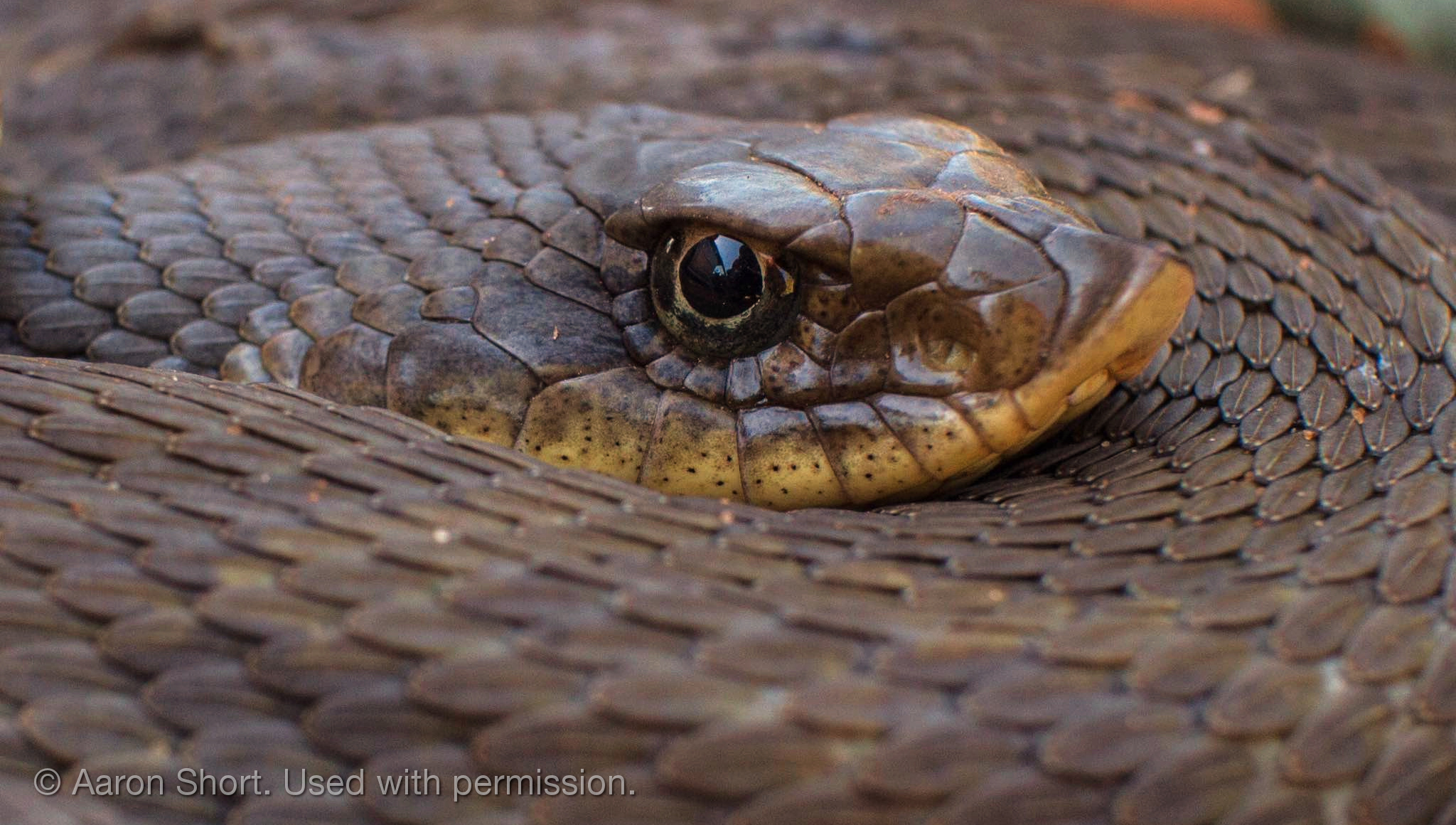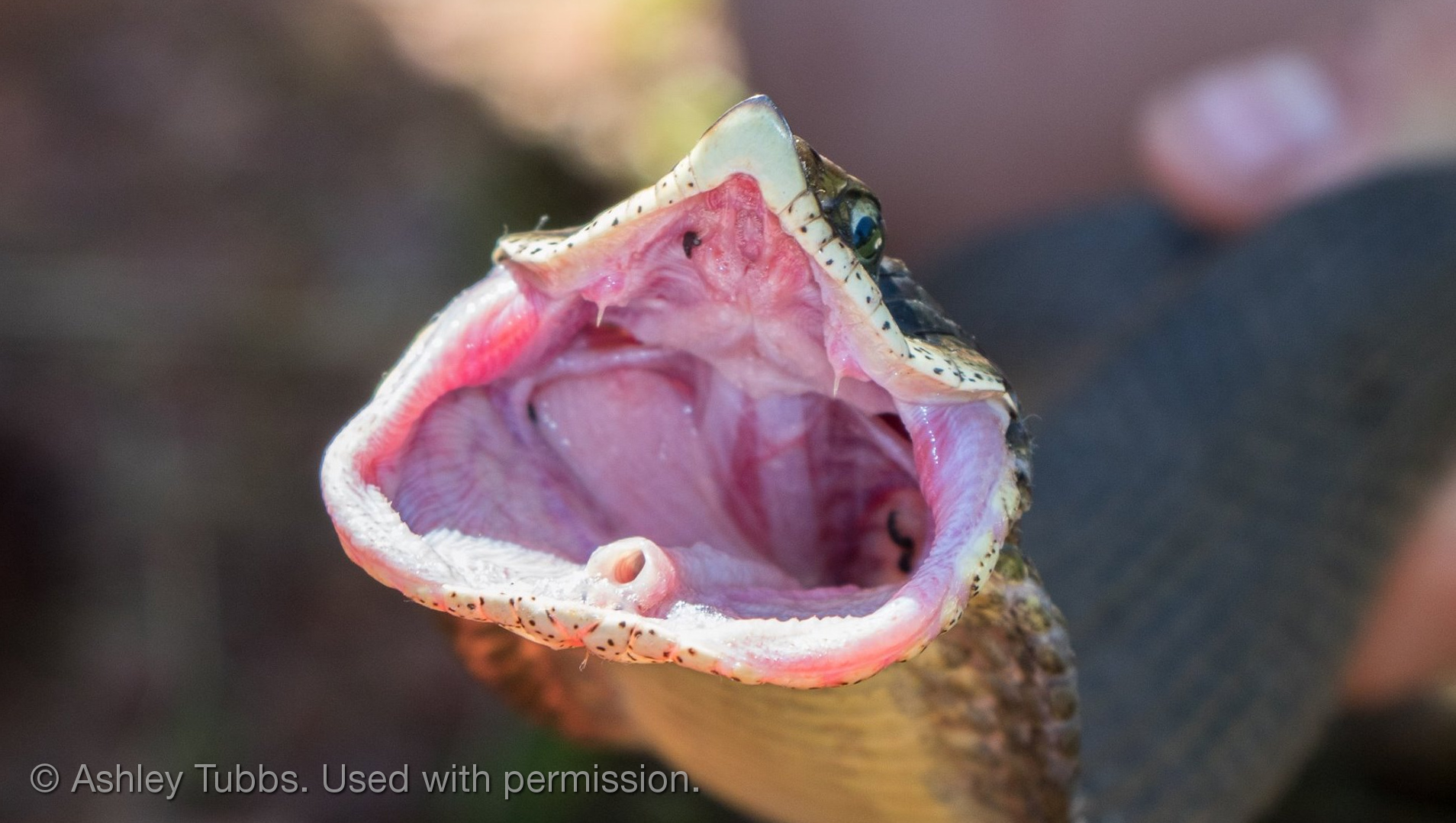By Ellen Marshall
Ellen Marshall has been writing since a young age and has been published in “Morbid Curiosity” magazine [Ed: surprise = zero] as well as being a contributor on the “Film Threat” and “Cinefantastique” websites. She has many friends who are herpetologists and owns a very handsome, Indonesian blue tounge skink named Turbo.
The “average” person runs screaming from things that creep, crawl and can potentially kill you with all manner of venomous wrath… Herpers are NOT those kinds of people (“Herpers” are people fascinated by herpetology, not people with herpes. A common misunderstanding.) They are a rare breed, who specifically seek out experiences with our reptilian neighbors, despite the inherent danger. They see the power and beauty in those scales, claws and fangs and they respect the long evolutionary path that created these incredible creatures.
I had the opportunity to talk to two of the most interesting men on the planet (sorry Dos Eqqis guy), Ray Morgan, a California-born documentary filmmaker and producer, who currently resides in Costa Rica and is involved in world-wide reptile education, and Dr. Bryan Grieg Fry, world renown scientist and Associate Professor at Queensland University in Brisbane, Australia, where he leads their Venom Evolution Laboratory, about the documentary film “The Venom Interviews”.
“I got to be the dumbest guy in the room!”
EM — I’m curious to know how the collaboration with so many experts for “The Venom Interviews” project came about and how did you get guys like Dr. Fry on board?
RM — I was a private reptile keeper and not really part of the herp “community.” I wanted to find people to be in the documentary who weren’t in it for their egos, but for their love of the work and the animals. I made about 100 cold calls and ultimately, the group of 35 people that were in the film were highly educated PhDs, biologists, herpetologists and keepers, so I was in the center of all of this knowledge and I got to be the dumbest guy in the room!
BGF — Ray contacted me about it and I instantly leapt at the opportunity.
EM — Ray, what inspired you to make the film?
RM — I was really disgusted and troubled by the way reptiles and their handlers were being portrayed in the media. Venomous reptiles in particular are an interesting subject, so why fictionalize and sensationalize it? The idea was to get rid of the hyperactive host and haunted house themed music to see if I could still end up with a compelling story.
EM — Dr. Fry, with so much misinformation and the rise of irrational, fear-based, TV and social media channels perpetuating negativity, especially towards venomous snakes, how do you, as a scientist and academic, counteract those attitudes and perceptions?
BGF — Through an unflinching commitment to accuracy. Such as disagreeing strongly with people saying that we should not refer to harmless rear fangs as venomous even though they are, for fear of scaring the public.
EM — So, in all of your years of research, lab work and field experience with venomous reptiles, what’s the one thing (or things) that has surprised you the most about them?
BGF — Our most surprising, recent discovery was that of the venom of the long-glanded blue coral snake with its tremendously unique action upon the nerves, turning them on instead of turning them off like other neurotoxic snakes do.
EM — The film is obviously a hit with the herpetology and venomous reptile community, how has the feedback been outside of that and why do you think the doc would appeal to a wider audience?
RM — That’s really the $64,000 question… It’s been well-received by people with an interest in nature and science and shows like “Planet Earth.” The film also features REAL people, who actually do this work. They are likable characters who are cool, interesting people that are very genuine. I think it can have a ripple effect that goes beyond professionals and hobbyists to that next tier audience.
EM — Were there any interesting bloopers or encounters with reptiles or other creatures during the filming of the documentary?
BGF — The first footage of me for “The Venom Interviews” had to be reshot later on as I looked like a skeleton. It was just after the surgery to repair my broken back and I looked absolutely awful. Like an absolute ghoul. It was also ruined by this African Gray parrot in the background that just would not shut up.
RM — Yes, the facility where we did the interview with Bryan had LOTS of birds and parrots who were very loud and noisy. We had to move them into a different room, but we could still hear them.
“This documentary was a passion project… I made the movie that I wanted to see.”
EM — Anything else you want people to know about this film?…
RM — The documentary took a year to film and over 4 years to edit. I wanted to ask deeper questions, the kind of stuff that people in the audience would ask if they could sit down and have a beer with these guys. This documentary was a passion project… I made the movie that I wanted to see.
For more information about “The Venom Interviews” documentary, visit the film’s website http://thevenominterviews.com/ or the Facebook page https://www.facebook.com/groups/The.Venom.Interviews/


